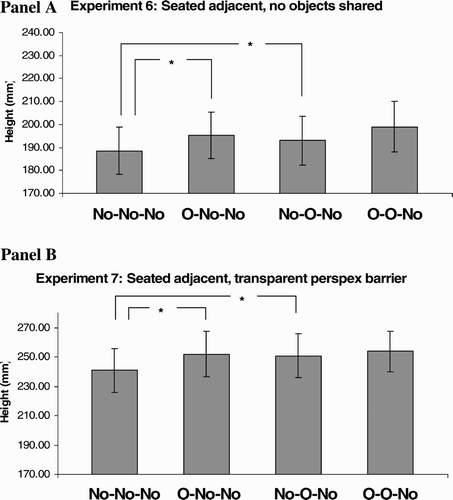Figures & data
Figure 1. Experiment 1: Single person reaching. This diagram demonstrates an example series of reaches, where the same person performs on every trial. n-1 is the trial that preceded the current trial. n-2 is the last but one trial. Black square is the target; white square is the obstacle. This example shows an O–No–No trial sequence.

Figure 2. Means of the maximum height reached for non-obstacle reach trials (trial n), with their standard errors. The bars marked * show a significant t test result. These are one-tailed t tests, as are those in the following experiments, as they examine a priori predictions. The bars are labelled with the trial type (n-2, n-1, n), where “No” represents non-obstacle trials and “O” where an obstacle was present.
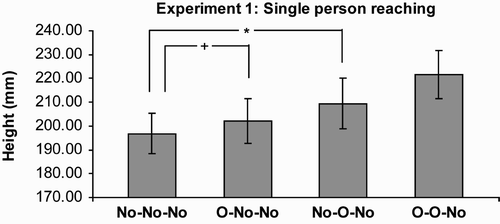
Figure 3. Experiments 2–4, seated opposite. Panel A: Experiment 2: shared target, seated opposite, same hands. Black square is the target; white square is the obstacle. This example shows a No–O–No trial. Panel B: Experiment 3: shared target, seated opposite, mirrored hands. This example shows an O–O–No trial. Panel C: Experiment 4: shared obstacle, seated opposite, same hands. This example shows an O–O–No trial. Experiments 2 and 3 share the same layout and differ only in hand use. Experiment 4 uses a narrower table, allowing participants to be close enough to share the same obstacle and to reach into each other's peripersonal space.

Figure 4. Means of the maximum height reached for non-obstacle reach trials (n), with their standard errors, for Experiments 2–4. The bars indicated by * show a significant t test result at p < .01. The bars are labelled with the trial type (n-2, n-1, n), where “No” represents non-obstacle trials and “O” where an obstacle was present.

Figure 5. Panel A: Experiment 2: shared target, seated opposite, No–No–No vs. O–No–No trials. Panel B: Experiment 4: shared obstacle, seated opposite, No–No–No vs. O–No–No trials. Panel C: Experiment 2: shared target, seated opposite, No–No–No vs. No–O–No trials. Panel D: Experiment 4: shared obstacle, seated opposite, No–No–No vs. No–O–No trials. The trajectories shown are the aggregate of each participant's average reach in that condition. The last 5 cm of the reach path have been removed due to the amount of noise at the end of the reach as participants adjust their hand for grasping. The vertical lines mark the points of the curve used in the ANOVA analysis described in the results section of Experiment 4. The far left of the curve was not analysed due to missing data from some participants from the early part of their reaches.
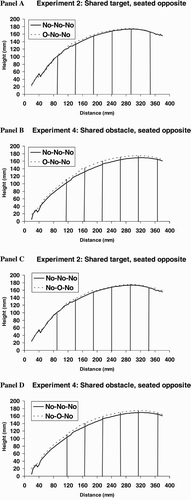
Figure 6. Seated at 90°. Panel A: Experiment 5a: shared obstacle, seated at 90°. Panel B: Experiment 5b: shared target, seated at 90°. In Experiment 5a participants avoided the same obstacle. In Experiment 5b participants grasped the same target. Black square is the target; white square is the obstacle.
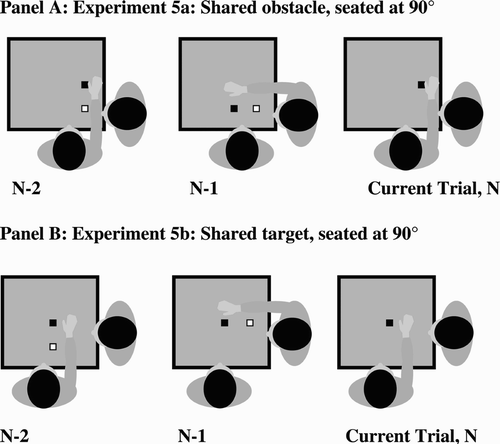
Figure 7. Means of the maximum height reached for non-obstacle reach trials (n), with their standard errors, for Experiments 5a and 5b. The bars indicated by * show a significant t test result at p < .01; + represents a p value < .05. The bars are labelled with the trial type (n-2, n-1, n), where “No” represents non-obstacle trials and “O” where an obstacle was present.
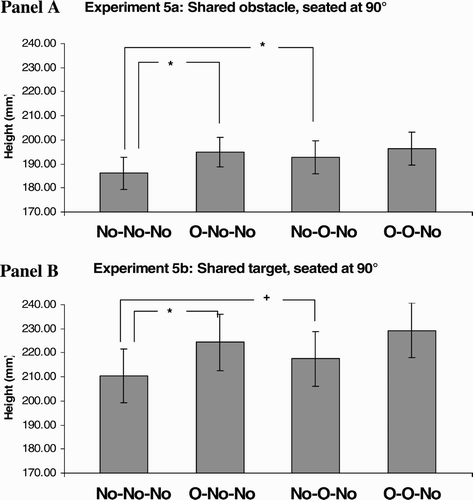
Figure 8. Seated adjacent. Panel A: Experiment 6: seated adjacent, no objects shared. Panel B: Experiment 7: seated adjacent, transparent Perspex barrier. In Experiments 6 and 7 neither the target nor the obstacle is shared by the participants, and they reach to different locations. The black square is the target; the white square is the obstacle. Importantly in Experiment 6 the other person's obstacle was within reaching peripersonal space of the observer. In Experiment 7 the obstacle was visually within peripersonal space; however, the Perspex barrier (the dark grey vertical line), prevented the participants from being able to actually reach to the other's obstacle. The barrier was 50 cm high and 55 cm long. It extended over the edge of the table between the participants by 5 cm.
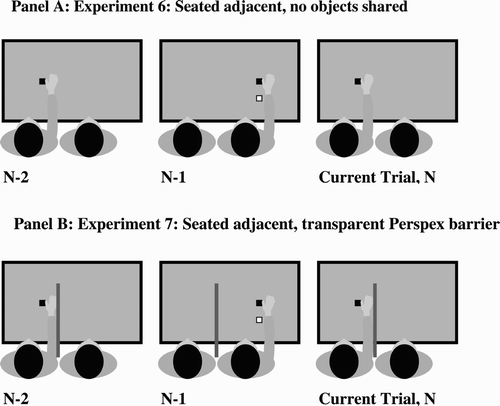
Figure 9. Means of the maximum height reached for non-obstacle reach trials, with their standard errors, for Experiments 6 and 7. The bars indicated by * show a significant t test result at p < .01. The bars are labelled with the trial type (n-2, n-1, n), where “No” represents non-obstacle trials and “O” where an obstacle was present.
